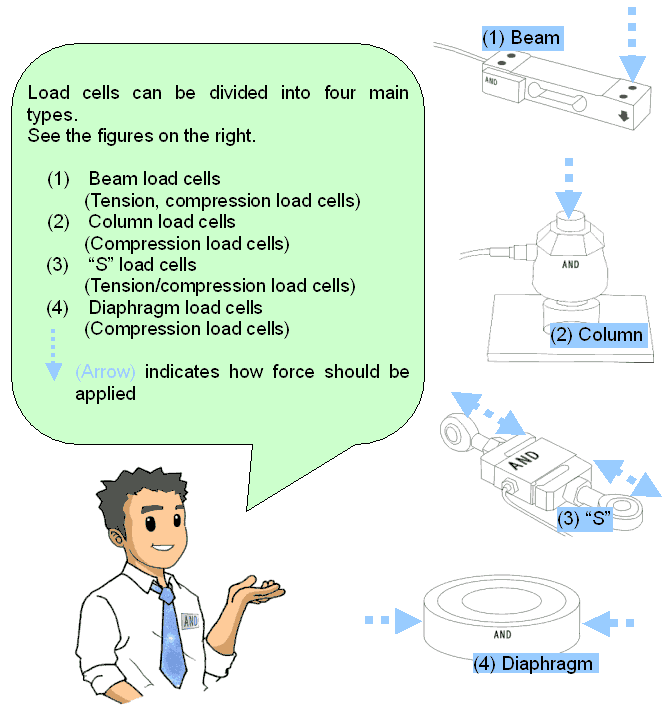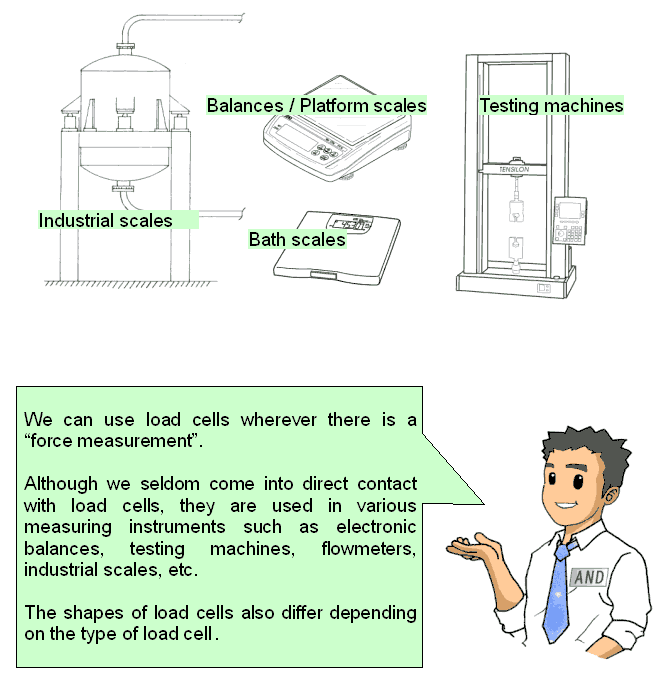A load cell is a transducer that receives force in the form of a load and converts it into electronic signals. Devices such as indicators, computers or other measuring devices are necessary to display and use the electrical signals. The outputted values can then be saved in a database or printed and organized in various ways.
The following is an explanation of how to connect a load cell to an indicator:
The output cables of a load cell consist of two power cables (+/-), two signal cables (+/-), and one sield cable. There are five cables in total.

To reduce the risk of error, seven cables are sometimes used, with two additional sensing cables.
The instruction manuals of both load cells and indicators describe the kind and the color of each cable, so you can simply match and connect two cables of the same kind and color.
Once the cables are connected, it is necessary to conduct the calibration and set the various option settings. The required settings differ with different products, so it is highly recommended that you read the instruction manual.









